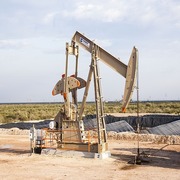The global oilfield services market size is expected to be valued at USD 139.1 billion by 2025, according to a new report by Grand View Research, Inc. These services are being increasingly implemented owing to the rising demand for energy and the development of new oilfields.
The purpose of oilfield services is to help operators control the subsurface pressures, minimize formation damage, control borehole erosion, and optimize drilling parameters including the penetration rate and hole cleaning. The burgeoning offshore industry, particularly in the Persian Gulf, is anticipated to drive the oilfield services market over the forecast period. However, the adverse environmental effects of E&P activities coupled with strict government regulations are likely to hinder the market growth.
The processing & separation segment accounted for a market share of 12.7% in 2016 and is anticipated to ascend at a CAGR of 2.7% over the forecast period. This service aids the treatment of oil by means of distillate treaters, desalting & dehydration electrostatic treaters, and multiphase separation systems. It helps purify the natural gas obtained from reservoirs, eliminating its inherent impurities. The techniques employed in gas processing & treatment include glycol dehydration, monoethylene glycol reclamation & regeneration, phase separation, and acid gas treatment & removal. The various advantages of processing & separation are anticipated to boost the demand for oilfield services over the next few years.
The growing number of deep-water exploration and production activities in the Gulf region is projected to fuel the demand for drilling fluids over the forecast period. In 2015, major companies such as Chevron, Petronas, Shell, Total, and YPF had announced plans to invest in E&P activities. However, macroeconomic factors such as inflation, falling oil prices, and the economic downturn had a negative impact on the oil production in various parts of Argentina, Brazil, and Venezuela.
Further key findings from the report suggest:
.
& development activities in order to expand their product portfolios and gain larger market shares.
